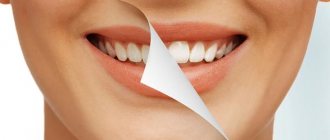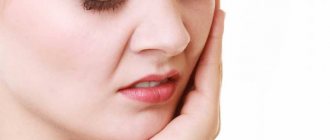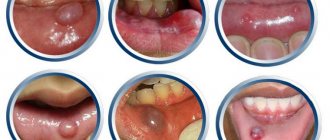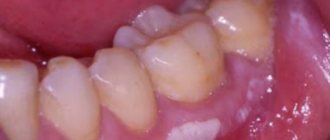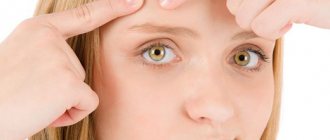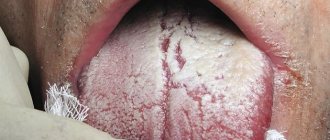Choosing a whitening product
Baking soda will help whiten white clothes
If white linen no longer looks as impressive as it once did, you shouldn't throw it on the rags. There are a number of traditional whitening products that our grandmothers and great-grandmothers used. This:
- classic boiling;
- salt;
- regular laundry soap;
- soda;
- ammonia;
- boric acid;
- potassium permanganate solution;
- mustard powder, etc.
But one of the most effective remedies was and remains hydrogen peroxide. You probably have it in your home medicine cabinet.
Any experienced housewife knows that hydrogen peroxide is an excellent aid for washing clothes. It gives an excellent effect when washing delicate items, as well as when removing stubborn stains from thick fabrics or upholstered furniture.
Principles of whitening with soda and peroxide
Before you bleach white things at home with soda and peroxide, you need to choose the appropriate option from more than ten recipes for different fabrics and their contaminants. Hydrogen peroxide (the ancestor of oxygen-based anti-pollution products) copes with the task adequately and, unlike many store-bought products, it does not harm the fibers.
Note! You can use the products on “fresh” clothes that are not stretched, worn out, or damaged by aggressive chemical compounds.
The whitening duo is suitable for many types of fabrics, including:
- linen;
- denim and cotton;
- synthetics;
- natural silk;
- wool and cashmere.
The solution is suitable for treating any clothing, home textiles, bedding and underwear, as it does not cause allergies or irritation to the skin. The product will help make things snow-white, eliminating yellowness, grayness, stains and faded areas.
General rules for whitening
There are a number of general whitening rules that must be followed. Let's list these rules:
- joint bleaching of different types of fabrics is contraindicated (for example, it is necessary to separate wool and silk, cotton and synthetics);
- It is not recommended to bleach laundry too often, because this procedure significantly reduces the strength of the fabric (one bleaching per three to four washes is acceptable);
- After bleaching, clothes should be dried in direct sunlight;
- things after the bleaching procedure need to be rinsed especially thoroughly;
- to get rid of an old and deeply ingrained stain on clothing, you should apply just a few drops of peroxide to it and leave it like that for a while;
- Boiling laundry is an extreme measure that is suitable only for the most difficult cases (this aggressive bleaching method is only suitable for very durable and dense fabrics).
Whiter than snow: washing with hydrogen peroxide
Absolutely everyone likes white underwear and bed linen. But how quickly such things wear out! To preserve their original appearance, you have to resort to a wide variety of methods and means. Sometimes it seems that it’s easier to completely throw away such a thing and buy yourself a new one. But that's not true. Next, we will look at several effective ways to whiten laundry using peroxide.
Hydrogen peroxide can be used when washing clothes, even in a washing machine
Washing white clothes with hydrogen peroxide is possible in a washing machine. The water temperature for such washing should be at least 70 degrees. For 20 mg of liquid washing powder you need to take about 10 mg of hydrogen peroxide. This washing option is suitable for high-quality bleaching of both synthetic fabrics and linen products.
Silk items, as well as woolen items, can also be washed using peroxide. To do this, you need to prepare the following solution: 200 g of salt, 30 g of powder and 3 mg of hydrogen peroxide must be dissolved in ten liters of hot water. Things should be soaked in this solution for three to four hours, after which they should be rinsed thoroughly.
Hydrogen peroxide will help restore the whiteness of curtains that have long since turned gray. To do this, you need to dissolve 2 tablespoons of peroxide and one spoon of ammonia in ten liters of hot water. It is enough to keep the tulle in this solution for just a couple of minutes, and then rinse it under running cool water.
Lace or silk underwear, as a rule, does not tolerate machine washing very well. Even if you set the delicate mode with low water temperature. Machine washing, sooner or later, will render such delicate items unusable. Therefore, it is recommended to wash underwear made from delicate fabrics only by hand. And hydrogen peroxide will help whiten it.
To do this, add a few tablespoons of peroxide to a plastic container with lukewarm water and mix thoroughly. The laundry should be soaked in this solution for about one hour, after which it can be washed in the traditional way.
How to strengthen soda and peroxide
You can bleach things using peroxide, sodium bicarbonate and their mixture in pure form, or in combination with additional ingredients. They will help enhance the effect and remove more complex contaminants. Popular additives and their effects on fabric:
- salt is suitable for synthetic and natural animal fabrics (wool and silk). Helps to delicately cope with the problem of restoring whiteness;
- ammonia is suitable for all natural fabrics, eliminates unpleasant odors, enhances the effect of the basic solution;
- mustard powder is also universal in use and can be added to mixtures to whiten any items;
- Potassium permanganate can gently wash any white item.
Fact! Mixing store-bought products with homemade formulations can have the opposite effect, leading to yellowing of the material and damage to things.
Washing and bleaching bed linen with hydrogen peroxide
White bed linen is incredibly difficult to care for. With prolonged use, as well as with long-term storage, it begins to fade, turn yellow and lose its original whiteness. Washing with hydrogen peroxide will help to effectively whiten bed linen.
If your bed linen is made of thick linen or cotton fabric, then you can safely apply grandmother’s proven method of boiling. To do this, the laundry is placed in a voluminous aluminum basin, filled with water and boiled for 30 minutes. Next, you need to add ammonia and peroxide (about 30 mg of each product) to the water. Then the laundry should be boiled in this solution for another hour, adding fresh water to the container as needed.
It is not recommended to boil silk bed linen. Products made from this material are bleached in a different way. First, the laundry is soaked for a couple of hours in a solution of ammonia, peroxide and table salt (two tablespoons of each). After the soaking procedure, the laundry can be washed either by hand or in a machine using a delicate cycle and at a temperature of no more than 40 degrees. In both the first and second cases, it is undesirable to twist silk linen after washing.
Table salt
This product is great for both synthetics and natural fabrics. Table salt is also used to make bed linen white.
How to bleach white laundry:
- Water is poured into an enamel or plastic container and salt is poured in a ratio of 1:2. Washed items are placed in the composition for a quarter of an hour. After the time allotted for the procedure, they are rinsed in clean water and hung out to dry.
- Strengthens the effect of salt - soda. How to wash white clothes: mix the substances in equal amounts and pour them into hot liquid. Then add 15 ml of hydrogen peroxide and shavings of laundry soap. The white item is placed in the solution for 120-180 minutes. Wash, observing the temperature regime.
- This remedy will get rid of the yellowness and grayness of your blouse: pour a handful of salt into 2 liters of boiling water, 1 tbsp. l. ammonium hydroxide and 50 ml of hydrogen peroxide (1 tbsp. perhydrol). Soak for 3 hours and wash using the traditional method.
Stale gray laundry cannot be bleached using these methods. Salt is not that aggressive.
It can give snow-whiteness only to those things that have turned gray due to frequent washing or yellowed from sweat.
How to deal with washed fabrics?
There is always a lot of hassle with over-washed laundry. Things become like this as a result of repeated washing in cold water, as well as constant contact with too hard water from the tap.
To bleach washed laundry, you will again need ammonia and peroxide. These two products should be mixed in equal proportions (approximately 30 mg each). Then the laundry is soaked in the prepared solution for 30-40 minutes. Afterwards, it is washed by hand or in a washing machine, having previously set the delicate cycle.
Ammonia will help restore freshness to terry clothes
But in order to “bring back to life” old and washed terry towels, you will need to prepare a miracle remedy from the following ingredients:
- ammonia;
- peroxide;
- laundry soap (in the form of shavings);
- a little dishwashing detergent.
Ideal whitening formula: peroxide + lemon + soda
Lemon juice will help get rid of stubborn and old stains
Hydrogen peroxide, in combination with soda ash and lemon juice, gives an unimaginable result in whitening laundry. This product can handle even stubborn stains. It's very easy to prepare. In two liters of hot water you need to dissolve a teaspoon of peroxide, a tablespoon of soda and about the same amount of lemon juice. The item is soaked in this solution for 10-15 minutes, after which it is rinsed thoroughly.
The acid contained in citrus juice penetrates deep into the fiber and effectively removes stubborn stains from sweat, blood, coffee, etc. Lemon juice has been used to whiten clothes for decades.
How to enhance the effect of fabric bleaching with hydrogen peroxide
A hydrogen peroxide solution removes stains on cuffs and collars and restores the appearance of gray, worn clothes. The following drugs help enhance the bleaching effect of white fabrics:
- ammonia;
- soda ash;
- lemon juice or acid;
- laundry soap.
This composition is used only for washing white items. It is impossible to remove stains on colored fabrics with this product, since the combination of peroxide with other substances can lead to discoloration of the material.
Peroxide and ammonia for whitening
Ammonia will help get rid of gray plaque and yellowness on white fabrics and enhance the whitening effect. For this we recommend:
- Dilute 1 tbsp in 5 liters of water at a temperature of up to 40 °C. l. peroxide and 1 tbsp. l. ammonia.
- Dip white clothes into the resulting solution and leave to soak for 30-50 minutes.
- After the time has passed, snow-white items are rinsed twice and washed daily.
Whitening tulle with hydrogen peroxide is carried out with a composition of:
- 10 liters of water, temperature 40-65 oC;
- 2 tbsp. l. 3% peroxide;
- 1 tbsp. l. ammonia.
The tulle is placed in the resulting mixture, soaked for 5-10 minutes, and rinsed thoroughly with warm and cold water.
A solution of hydrogen peroxide and ammonia with water helps restore lost whiteness to things
To bleach a blouse or shirt, dilute 1 tbsp in 10 liters of water at a temperature of 40-70 °C. l. ammonia and 2 tbsp. l. 3% hydrogen peroxide solution. The laundry is dipped into the resulting composition for 20-30 minutes and rinsed thoroughly.
To ensure that cuffs and collars are washed perfectly, they are first rubbed with laundry soap. This enhances the whitening effect.
Hydrogen peroxide and baking soda for whitening clothes
A mixture of hydrogen peroxide and soda has an effect comparable in quality to professional bleach. To restore the whiteness of collars and cuffs, prepare a paste of 10 ml of peroxide and 1 tsp. soda The resulting composition is applied to the contaminated areas with a brush and left for 5-15 minutes. Then wash in an automatic machine with an additional rinse function.
We recommend reading: Baking soda: beneficial properties, uses, how to take
A paste made from hydrogen peroxide and baking soda whitens shirt cuffs and collars.
When bleaching children's whites and kitchen towels with a mixture of hydrogen peroxide and soda, excellent results are obtained. This mixture has proven itself well among housewives. Add 1 tsp to 2 liters of water at a temperature of 30 °C. peroxide and 1 tbsp. l. soda ash. White items are placed in the mixture for 10 minutes and washed as usual.
Cotton and linen white kitchen towels can be bleached using soda ash and peroxide, which are poured into the laundry detergent compartment. At a temperature of 60-70 oC, laundry is washed as usual. It is not recommended to use additional stain removers with this method.
Attention! Use baking soda and peroxide bleach only on cotton and linen fabrics. Before using the paste on things, the product is tested in an inconspicuous place of the product so as not to burn the material.
School white shirts cause a lot of trouble for housewives. Stubborn stains from sweat and deodorants, greasy food marks, marks from a ballpoint pen - all this must be removed from the child’s clothes. The following solution will help to bleach a blouse with hydrogen peroxide from sweat and yellow stains:
- 4 liters of water at a temperature of 40-70 ° C;
- 2 tbsp. l. soda ash;
- 2 tsp. peroxide.
A shirt or blouse is dipped into the resulting composition for 15 minutes. After the time has passed, the items are thoroughly rinsed and dried.
Stages of whitening a blouse using a solution of water, hydrogen peroxide and soda
Whitening with hydrogen peroxide and citric acid
A solution of lemon juice or acid and hydrogen peroxide can even cope with stains from fuel oil and diesel fuel on white things. To prepare the composition you will need:
- 2 liters of warm water;
- 1 tsp. peroxide;
- 1 tsp. citric acid.
White clothes with stains are soaked in the resulting mixture for 10-15 minutes, rinsed well and washed.
Synthetic fibers react well to citric acid, which helps to delicately deal with stains on white items. For this:
- Water at a temperature of up to 40 °C is filled into the basin.
- Add 1 tsp. hydrogen peroxide.
- Squeeze juice from ½ part lemon.
- Mix the composition thoroughly.
- Place clothes made of synthetic fabric for 20-30 minutes.
- Rinse things thoroughly, first at temperatures up to 40 ° C, and then in cold water.
The composition of citric acid and hydrogen peroxide gently whitens synthetic fabrics
The resulting solution eliminates yellowness on white blouses. To do this, apply the mixture to the areas of contamination with a sponge and leave for 30 minutes. If necessary, wash the entire item with this mixture.
Light jeans always have a problem bleaching. A composition of citric acid and hydrogen peroxide will cope with stains on things. To do this, mix 1 liter of water with 1 tsp. citric acid and 1 tbsp. l. hydrogen peroxide. White jeans are soaked for 20-30 minutes. Wash with the extra rinse function.
If desired, this product is applied from a spray bottle to the legs of colored jeans to lighten some areas.
To achieve a snow-white effect on synthetic fabrics, use the following composition:
- 5 liters of warm water;
- 1 tbsp. l. washing powder for delicate fabrics;
- 4 tbsp. l. table salt;
- 1 tbsp. l. hydrogen peroxide;
- 1 tbsp. l. ammonia.
Mix the ingredients well. White items made from synthetic fibers are immersed in the resulting solution for 2 hours. Rinse thoroughly 2 or more times.
Proper care of white linen
White linen requires special care
Housewives have long developed experimentally a set of rules for caring for white linen. Let's list these simple rules:
- for washing you should use special powders for white fabrics;
- Colored and white items should not be mixed when washing;
- Before washing, white laundry must be soaked in warm water;
- After washing, clothes should be rinsed first in warm and then in cool water;
- Boiling laundry is an extreme measure that should be used as a last resort.
It is also important to note that prolonged storage of light-colored linen in the closet negatively affects its appearance. That is why it needs to be ventilated periodically; things should not sit for a long time.
We hope that the tips and tricks in this article will help you keep your things snow-white and beautiful! It is important to note that hydrogen peroxide is successfully used not only for bleaching laundry, but also for cleaning window glass, tiles, sinks and other surfaces. Therefore, do not be lazy to go to the nearest pharmacy and buy a bottle of peroxide. It is inexpensive, and will definitely come in handy in the household!
When to be careful
Every housewife knows that a fresh stain is easier to remove, and therefore tries not to put off washing until “later.” But if the stain is from coffee or tea, juice or grass, even timely soaking may not save the item. This does not mean that to achieve the desired you need to increase the dosage of the components included in the solution. In an effort to achieve perfect cleanliness, you can easily ruin your favorite item if you use the solution incorrectly:
- If a mixture of soda and peroxide is applied directly to the fabric, then the composition will need to be washed off no later than after 5 minutes. Otherwise, the threads will be damaged and the item will become unusable.
- Do not use a hot solution to soak items made from delicate fabrics. You can put things in a container with the prepared composition only after the water has cooled to room temperature.
- Sweat stains can be removed using baking soda and peroxide only from cotton fabrics.
- You cannot add industrial preparations to a self-prepared whitening composition.
By following all the rules of use, you can quite easily bleach bedding and underwear, children's clothes, women's blouses or men's white shirts using baking soda and hydrogen peroxide purchased at the pharmacy.
